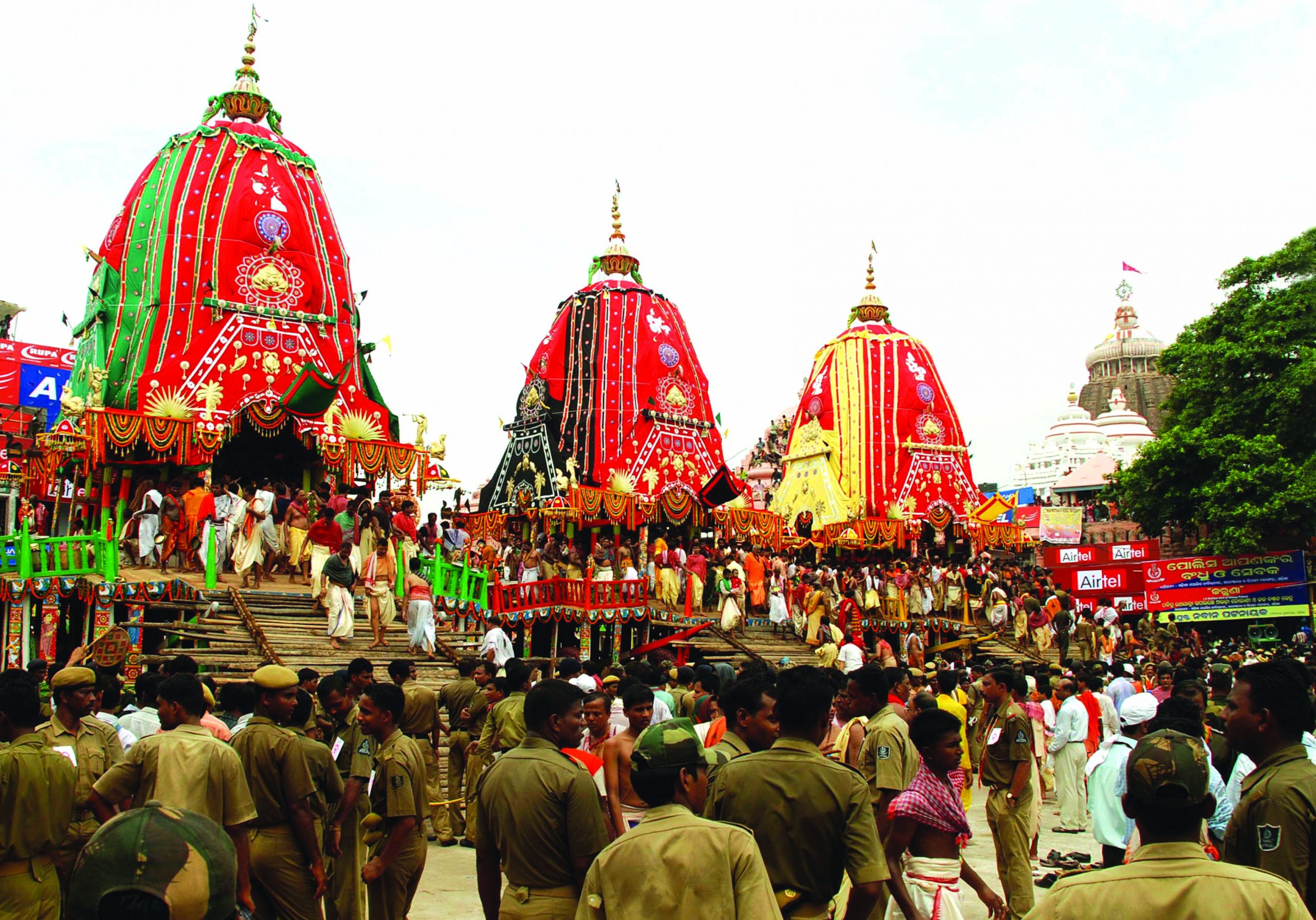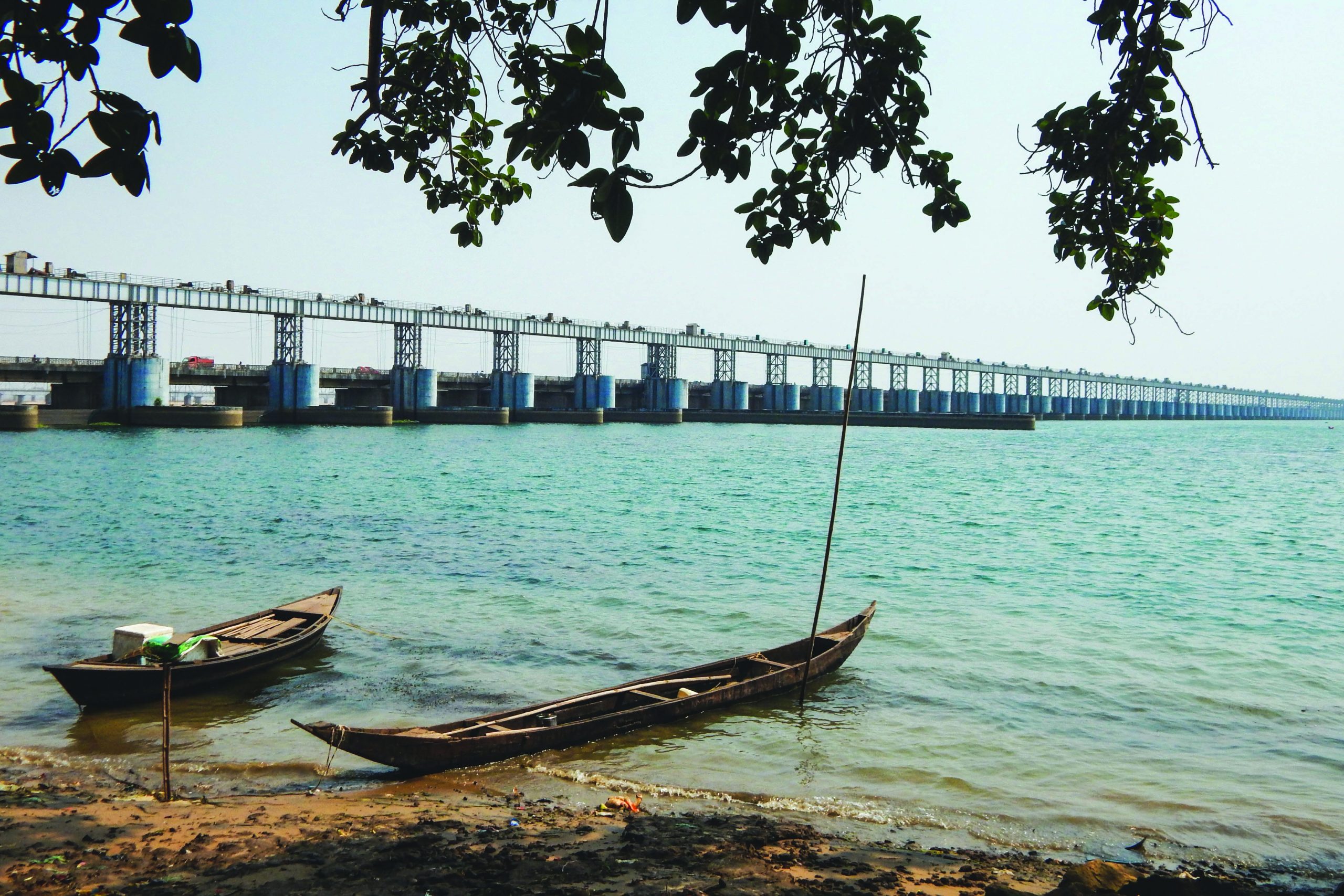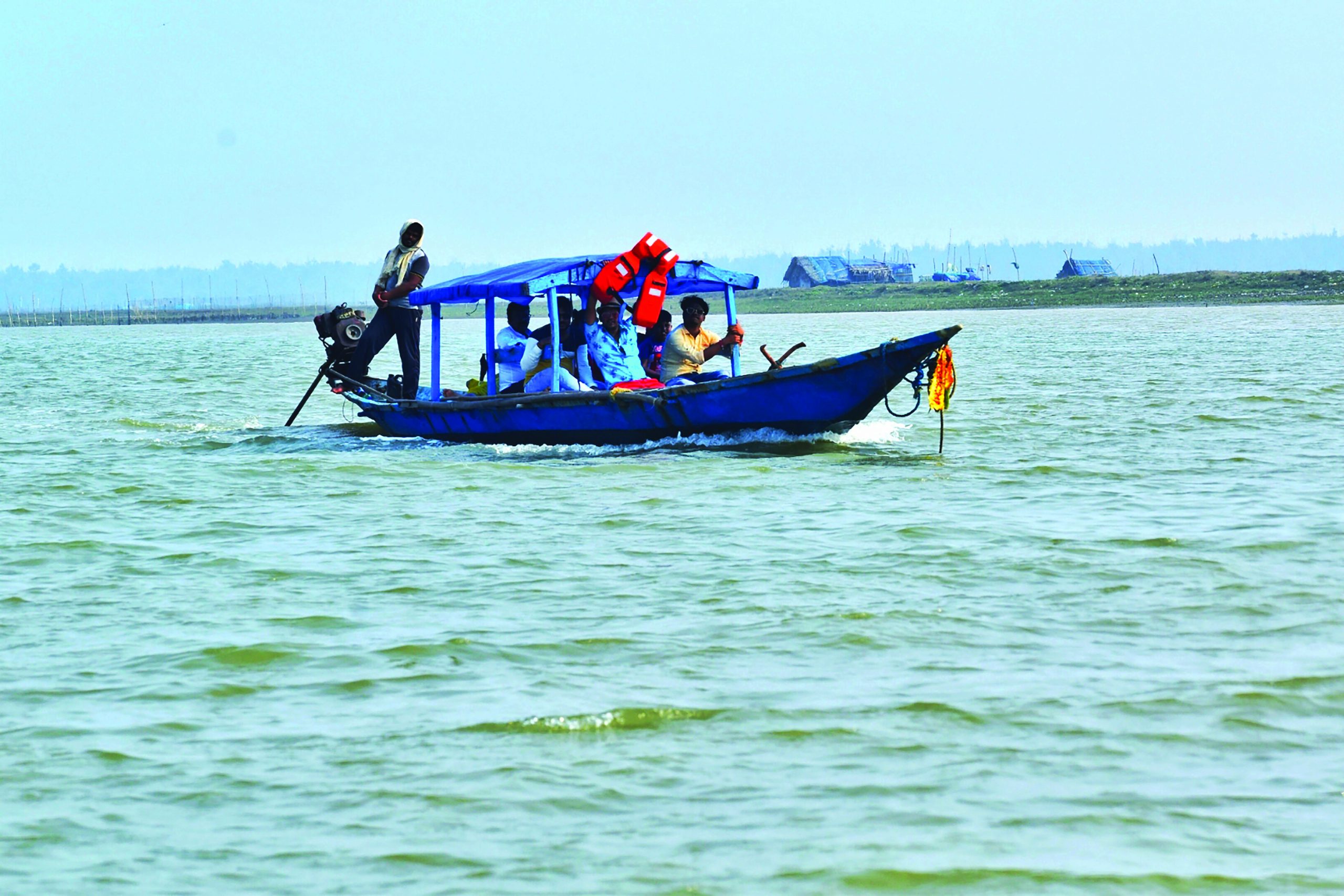Odisha: Where Emperor Ashoka once converted and reigned
Contemporary Odisha offers visitors nature in all its glory with beaches, rivers, waterfalls, hills, forests and tribal life plus a rich tradition of architecture, monuments and sculptural art

Odisha (formerly Orissa) is most well known for being the epicentre of the ancient Kingdom of Kalinga. Emperor Ashoka, king of Magadh, invaded Kalinga in 261 BCE and embarked upon a great slaughter in the Kalinga war. But so great was the carnage and human suffering, that the emperor experienced a momentous change of heart and embraced the principle of ahimsa or non-violence embodied in Buddhism, to which he converted after the war.
Subsequently, the ancient state rose to prominence during the reign of Emperor Kharavela, a great practitioner of Jainism. Other great rulers were the kings of the Kesari and Eastern Ganga dynasties who built great temples and monuments. With the kingdom committed to peace and industrious prosperity, the Kalinga school of architecture flourished from the 7th to 13th centuries AD.
In the popular imagination, the ancient kingdom of Odisha, now a fully-fledged state of the Indian Union, is a backward area on the eastern seaboard. Yet this state is culturally rich and its history and temple architecture have been carefully preserved. Consequently, contemporary Odisha (pop. 47 million) offers visitors nature in all its glory with beaches, rivers, waterfalls, hills, forests, wild and tribal life, plus a rich tradition of architecture, monuments and sculptural art. Some of its monuments date back to the 3rd century BCE and are extant to this day.
As a result the state offers more than 4,000 protected monuments and archaeological sites. These include early Jain cave temples; Buddhist monasteries (viharas); domed structures (chaityas); pillars (stupas); ancient and medieval forts, palaces and colonial architecture.
Bhubaneswar
Known as the ‘temple city of India’, Bhubaneswar is the administrative capital of Odisha. Visitors are certain to marvel at the magnificence of the three monuments which dominate the city’s skyline — the soaring spire of the Lingaraj temple; the white-domed Peace Pagoda of Dhauli hills and the Ochre temple of Mahavir Jina in the Khandagiri hills.
These ancient temples epitomise the advent and ascendancy of Hinduism, Buddhism and Jainism in Odisha’s rich history. Bhubaneswar offers the visitor several other places of historical interest. Close to the hallowed field of the bloody Kalinga war which transformed Emperor Ashoka into an apostle of peace, is the earliest rock sculpture of India in the shape of a stately elephant atop the Ashokan Rock Edict at Dhali, which commemorates the world’s first great mass religious conversion.
Also worth a visit is the cave complex of Udayagiri which houses the famous inscriptions of Emperor Kharavela in Hatigumpha. The Udayagiri inscriptions, the exquisite sculptures and reliefs of Ranigumpha and the colossal statue of Mahavir Jina on the Khandagiri hills mark the high point of Odisha’s cultural ascendancy in ancient India.
In succeeding eras, royals vied with each other in building temples. Consequently at one period in its civic history, Bhubaneswar hosted over one thousand temples many of which are still intact and provide a complete record of the Kalinga architecture from inception to maturity. Of these, the Lingaraj temple (11th century AD) rising to a height of 184 ft towers over the city’s skyline. Also check out the 10th century Mukteswar temple with its stone arch and sculptures depicting tales from Panchatantra; the Parsurameswara temple (7th century) famed for ornate carvings and latticed windows; the Rajarani temple (11th century) featuring slender waisted life-size carvings reflecting a wealth of feminine beauty; the Brahmeswar complex, a miniature version of the Lingaraj temple.
The Odisha State Museum sited in the heart of the city features a rich collection of sculptures, coins, copper plates, stone inscriptions, rare palm leaf manuscripts, lithic and bronze age tools, natural history and geological objects, paintings, anthropological specimens, and traditional folk music instruments.
Bhubaneswar’s other attractions include the Tribal Research Museum, Ekamra Kanan, the Regional Science Centre, the Pathani Samanta Planetarium and the BDA NICCO Park. For Orissan handicrafts including stone sculptures, patta painting, brass casting, horn toys and silver filigree, Kalanagar on Khandagiri Road is the best location.
Excursions. Easily accessible day and weekend getaway options from Bhubaneswar include Nandankanan (11.8 km), a biological park with a lion and white tiger safari and ropeway; Hirapur (19 km), a hypaethral temple of 64 yoginis; Pipli (30 km) the home of applique work, and Atri (42 km) a hot springs and bathing complex.
Accommodation. Top-end: The Trident Bhubaneswar (Rs.8,550 per night), Vivanta Bhubaneswar (Rs.8,500), WelcomHotels by ITC (Rs.9,500); Mid-range: Lemon Tree Premier (Rs.6,320), Pal Heights (Rs.4,747), Hotel Sandy’s Tower (Rs.4,483); Budget: Crystal Urban Park (Rs.1,799), S M Hives (Rs.1,437), Annaprna Inn (Rs.1,288).
Puri
 Famous for its celebrated annual chariots festival, the Rath Yatra, Puri is widely regarded as one of the four holiest places in India by virtue of being the earthly abode of Lord Jagannath, ‘Lord of the World’. Sited on the shores of the Bay of Bengal it offers the finest beaches in India and hosts artisans and craftsmen who produce a wide range of unique handicrafts.
Famous for its celebrated annual chariots festival, the Rath Yatra, Puri is widely regarded as one of the four holiest places in India by virtue of being the earthly abode of Lord Jagannath, ‘Lord of the World’. Sited on the shores of the Bay of Bengal it offers the finest beaches in India and hosts artisans and craftsmen who produce a wide range of unique handicrafts.
The Shri Jagannath temple constructed in the 12th century is the abode of Lord Jagannath. The main temple, an imposing structure 213 ft high, stands on an elevated platform in the heart of the city with its swirling pinnacle offering a panoramic view for miles around. Within its precincts is the famous Ananda Bazar, proclaimed the biggest food market in the world. Entry to this temple is restricted only to Hindus.
Several other shrines in Puri worth viewing include Gundicha, Lokanath, Sunar Gaurang, Siddha Bakul, Girnarabant and Chakratirtha.
Excursions. Balighai (8 km) Puri’s famed Sea Turtle Research Centre; Balihar-achandi (27 km), a shrine amid desolate sand dunes is a quaint picnic spot; Beleswar (15 km) is a seaside shrine of Lord Beleswar or Shiva; Raghurajpur (14 km) is an artisans’ village and Sakshigopal (20 km) is the shrine of Lord Sakshigopal; Satpada (50 km) is a scenic spot on the Chilika Lake, ideal for bird watching and viewing cavorting dolphins.
Accommodation. Top-end: Kakkson Club (Rs.8,686 per night), Sterling Puri (Rs.11,041), Hotel Indrapuri (Rs.8,460); Mid-range: The Chariot Resort and Spa (Rs.3,760), VIP Square (Rs.2,892), Santosh Residency Homestay (Rs.3,505); Budget: Hotel Lotus Puri (Rs.1,592), The Yellow Hotel by Festin (Rs.2,614), PP Palace (Rs.1,698).
Konark
The world famous Sun Temple of Konark also known as the Black Pagoda is the ultimate example of ancient Oriya temple architecture. Designed as a celestial chariot of the Sun God, complete with twelve pairs of wheels drawn by seven horses, and embellished with exquisite sculpture reliefs, it was constructed in the 13th century and is a Unesco recognised world heritage monument.
The colourful pageant of the Konark Festival held every year from December 1-5 is witnessed by thousands of tourists, with the illumined Sun Temple forming a poetic backdrop to events. Also worth taking in is the ASI Museum, managed by the Archaeological Survey of India with an excellent collection of sculptures from temple ruins.
A short walk, or drive from Konark is Chandrabhaga beach, quieter and more serene than Puri, offering spectacular sunrises and sunsets.
Accommodation. Lotus Resort (Rs.7,199 per night), Sun Temple Hotel (Rs.2,038), Radhakanta Lodge (Rs.2,805), Surya Inn (Rs.2,528), Pagoda Inn (Rs.1,304).
Cuttack

One of Orissa’s oldest cities, this is the best place to shop for indigenous filigree and silverware, horn and brass work, and rich silk and cotton textiles.
The city is bounded by the rivers Mahanadi in the north and Kathajodi to the south. The stone embankments protecting the banks of the rivers are eloquent testimony to the skills of 11th century engineers. The historic showpieces of the city are the ruins of the Barabati Fort built by the Ganga dynasty contiguous to the shrine of Katak Chandi, the presiding deity of Cuttack.
The centre point of Cuttack is the Qadam-I-Rasool, an 18th century shrine sacred to Hindus and Muslims. It reportedly shelters the footprints of Prophet Mohammed on a circular stone housed in the central mosque. The complex comprises two other beautiful mosques and a music gallery.
Also worth a visit is the Paramahansanath temple famed for its hidden spring (ananta garva), which mysteriously floods the sanctum sanctorum on auspicious occasions.
Excursions. Banki (45 km) from Cuttack, contains the shrine of Goddess Charchika where the eight-armed deity of Chamunda is worshipped according to tantric rites. On the banks of the Mahanadi is Bhattarika, (78 km), a beautiful picnic spot with the shrine of Goddess Bhattarika.
Other excursions are Chandikhol, (44 km) and neighbouring Mahavinayak with a temple of Shiva in its scenic environs. Picturesque Chhatia (30 km) is replete with shrines and ruins of an ancient fort. With the Saranda hill to the west and the river Mahanadi to the south, Ansupa lake (70 km) is a haven for migratory birds in winter and offers boating and fishing facilities. Naraja (15 km) another charming locale on the bank of the Mahanadi, is dotted with several Buddhist sculptures.
Niali Village (47 km) is popular for its shrines and Archaeological Sculpture Shed. Close by is Madhab, an attractive picnic site on the banks of the Prachi river and notable for the shrine of Radha-Madhab. Dhavaleswar (35 km), a small island in the Mahanadi is an ideal weekend getaway and a famous shaivaite centre.
Accommodation. Top-end: Health Ville by WB Resorts (Rs.8,037 per night), Bima Academy Guest House (Rs.6,230), Deojhar Prakruthi Bhavan (Rs.4,033); Mid-range: Lunch Land (Rs.2,420), M8 Eco Resort (Rs.2,828), Hotel Golden Palace (Rs.2,887); Budget: Dream Stay Premium (Rs.1,609), HotelSagar (Rs.716), Heaven Stay (Rs.967).
Gopalpur-on-Sea
Popularised by British ruling classes of Calcutta, Gopalpur-on-Sea is a mere 16 km from Berhampur, the hub of southern Odisha. This tiny sea resort with deep, clear blue waters, white surf and golden sands, reputedly has the finest beaches of the eastern littoral.

Crumbling walls and pillars of stately bungalows and a lonely lighthouse are mute witnesses to past glories. A modern port is being developed here, to revive the town’s prosperity.
Excursions. Berhampur (16 km), is an important commercial town of south Orissa and produces an interesting array of Orissan handicrafts. Taptapani (65 km), set amidst evergreen forests, is reputed for its hot sulphur springs. OTDC’s Panthanivas hotel has bath tubs directly connected to the springs. En route to Taptapani is Mahuri Kalua (30 km), a pretty setting showcasing the shrine of Goddess Kalua. Patisonapur 30 km from Gopalpur-on-sea, on the Andhra border is another quiet and secluded beach, located across the river Bahuda.
Taratarini (30 km), offers striking natural beauty and is adorned by the shrine of the twin goddesses Tara and Tarini. This tantric shrine is accessed via a steep flight of one thousand steps as well as a pucca motorable road from the foothill to the rooftop. Jaugada (35 km) is famous for an ancient Ashokan rock inscriptions. There is also a ruined fort here, a monument to the ancient Rushikulya Valley civilization.
Accommodation. Hotel Ashok Plaza (Rs.7,520 per night), Swosti Palm Resort (Rs.5,001), Hotel Nandan International (Rs.3,171), Seamerrid Botique Resort (Rs.3,270).
Chilika Lake

An hour’s drive (45 km) from Gopalpur, and spread over 1,100 sq km, Chilika is the country’s largest inland lake. Dotted with islands, it hosts the richest variety of acquatic fauna and is an ornithologist’s paradise when migratory birds arrive in winter. Sunsets and sunrises are memorable experiences here. Boating and fishing facilities are available on the lake, which teems with marine life and one can view dolphins at the Chilika mouth near Satpara. Amidst the calm and serene environs of the lake is Rambha, famous for its bird sanctuary. For the religious there’s the Shakti Shrine of Kalijai.
For cruising around the islands one can use the motor launches of OTDC embarking at Barkul and Rambha, and of the revenue department at Balugaon. Private boats are also available. OTDC offers water sports at the Water Sports Complex.
Accommodation. Top-end: Swosti Chilika Resort (Rs.8,874 per night), Sterling Puri (Rs.6,946); Mid-range: Daavens Island Resort (Rs.3,065), Om Leisure Resort (Rs.3,616), Kutumb Farmhouse Resort (Rs.3,760); Budget: Hotel Disha Retreat (Rs.1,768), Chilika Heritage Resorts (Rs.1,128), Apple Resort (Rs.1,316).
For further information, visit www.orissatourism.gov.in.

















Add comment